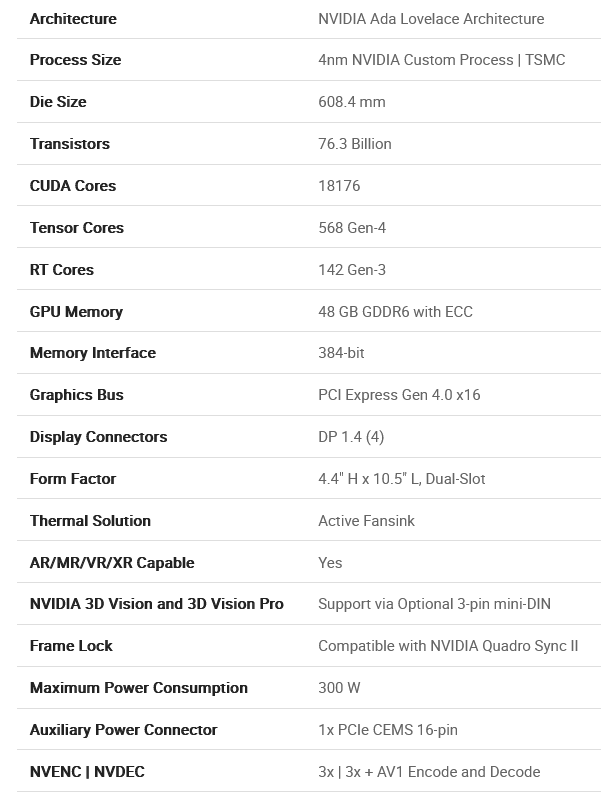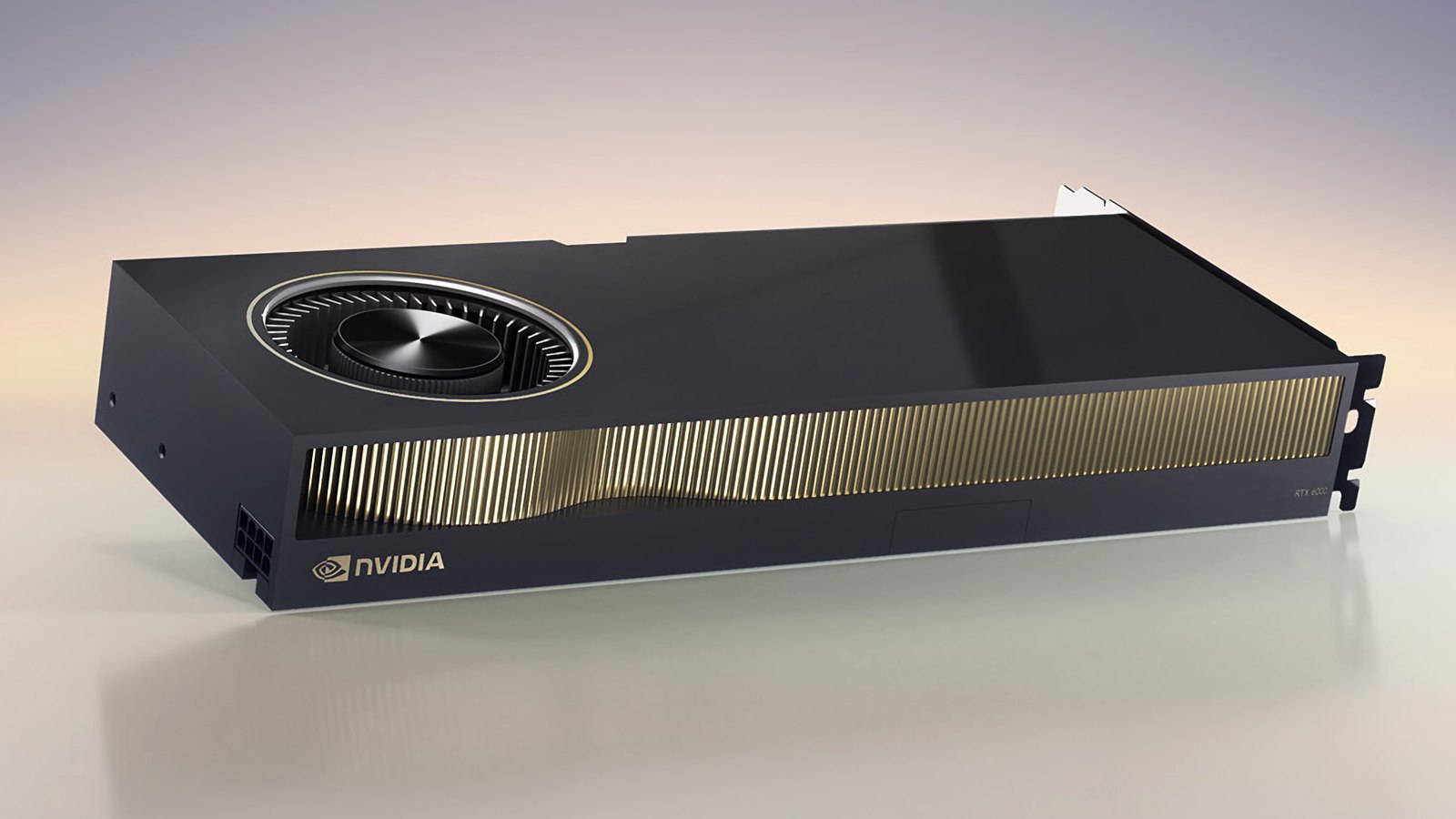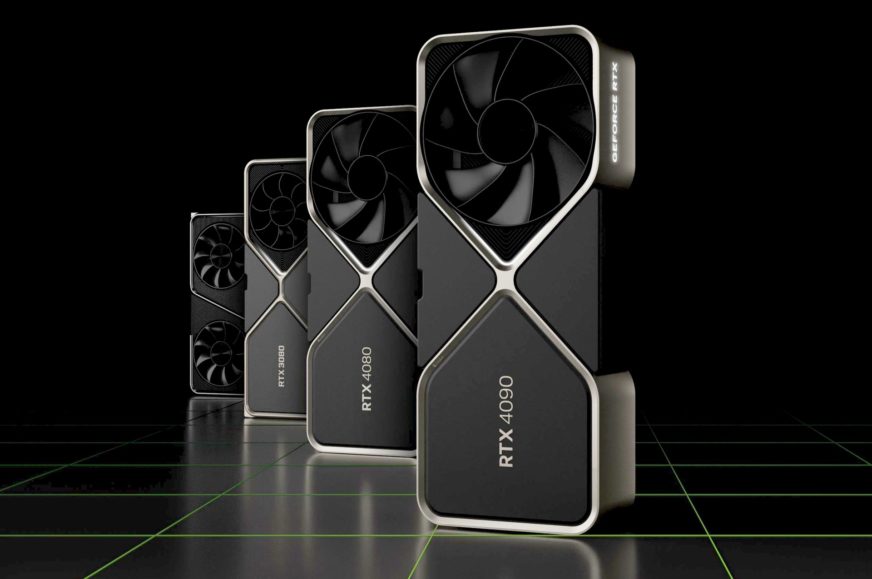Ada Lovelace's almost final form: AD102 with 18 176 shaders for Pro users
On Tuesday, Nvidia unveiled the first GeForce RTX 4000 GPUs with Ada Lovelace architecture. The fastest RTX 4090 SKU is based on the AD102 chip, but it’s already been confirmed that it’s a stripped-down version with 16,384 shaders, while the full chip has over 18,000 FP32 units. But Nvidia already has a card that has almost all of the units unlocked: the Nvidia RTX 6000 Ada, a GPU aimed at professional graphics and similar markets.
The Nvidia RTX 6000 Ada card was announced back-to-back with the GeForce RTX 4000 desktop gaming graphics. The “Nvidia RTX” line of GPUs is a continuation of the previous Nvidia Quadro (and more recently, Quadro RTX) professional visualization graphics cards brand, which Nvidia recently dropped, similar to how the Tesla brand was dropped for compute accelerators. That’s just in case you weren’t clear on what this “Nvidia RTX without GeForce” is all about.
Near-complete AD102
The Nvidia RTX 6000 Ada is based on the AD102, the largest GPU of the Ada Lovelace architecture. Nvidia itself hasn’t disclosed the exact specs yet, but we got them from PNY, which is supposed to be making these cards for Nvidia. According to it, the RTX 6000 Ada has 18,176 active shaders (FP32 units), 568 Tensor cores and 142 RT cores, which would mean there is 142 SM blocks out of the total 144 that are present in the silicon (18,432 shaders, 576 Tensor cores, 144 RT cores).
You may remember that this is pretty much exactly how the last-generation GeForce RTX 3090 configuration looked like two years ago – it also had only two SMs left in reserve (82 out of 84 SMs physically present were active). There is no such almost fully enabled model amongst the gamer-oriented cards of this new generation. It probably won’t come out until some mid-generation refresh that would introduce higher-performance Ada cards.
300W power draw
Unfortunately, we do not know the clock speeds of this card, but they will definitely be lower than those of the GeForce RTX 4090. That’s because the Nvidia RTX 6000 Ada card has a significantly lower (and also more reasonable, we have to say) 300 W TDP. This will limit its clock speeds, and it’s quite likely that its raw compute performance will end up being worse than the GeForce RTX 4090 because of this.
So we’re talking about a GPU configuration that shows the true potential of the AD102 in a way, but that potential would only really be unleashed if you overclocked the card and allowed it to consume the same or more power that the RTX 4090 is allowed to burn. On the other hand, with this lower power draw, lower clock speeds, and higher unit count, the AD102 will achieve significantly better power efficiency (better performance per watt) than in the RTX 4090. It would be nice if the gaming cards also used this sort of power draw and efficiency: the RTX 6000 Ada gives us a peek at how would such a more efficient alternate-universe version of RTX 4090 look like.

48 GB of memory
Memory is another big difference from the game model. This model has a full 48 GB of video memory. Additional, ECC data protection mode can be enabled (probably at the cost of performance degradation, as it will be in-band ECC). What’s also interesting is that it’s GDDR6 memory, not GDDR6X. For one thing, this means lower bandwidth (with 16.0GHz GDDR6, on a 384-bit bus, the bandwidth would be 768 GB/s, while the RTX 4090 reaches 1008 GB/s), but also probably lower power draw. That could have been a pretty important factor in the memory choice, given the need to fit in the 300 W TDP limit.
The Nvidia RTX 6000 Ada apparently uses conventional cooling, the card is only the traditional two slots thick and apparently has a blower-type cooler with a single radial fan that blows air through a shroud-covered heatsink and eventually out of the computers’s case through the card’s exhaust. These coolers are usually used in professional segment cards as they are more reliable in terms of not requiring great airflow in the case and they also handle more cards being installed in adjacent slots well.

The downside is that these coolers are noisier, especially when they have to cool 300 watts of heat. That’s also probably why the RTX 6000 Ada has lower power draw than the RTX 4090 – in workstations and with this style of cooling, the limits of what’s realistically possible (and acceptable for customers, too) are simply lower. The power supply is handled by the new ATX 3.0 16pin 12VHPWR connector. In the illustrative pictures you can see the 8-pin EPS connector you normally plug into the motherboard on the cards, but that’s not correct based on the published specifications – apparently the illustration used is the RTX A6000 card from the previous Ampere generation and nobody has bothered to re-render the picture yet.
The specifications of the RTX 6000 Ada card also confirm some of the features of the Ada Lovelace chips. Like the RTX 4090, this Pro card does not support PCI Express 5.0 – the interface for connecting the card to the system’s processor is still PCI Express 4.0 ×16. And the card also doesn’t support DisplayPort 2.0, which is perhaps a bit of a surprise. The RTX 6000 Ada does provide four DisplayPort video outputs, but all of them only come in version 1.4a, unchanged from the previous two generations.
Three AV1 decoders and encoders
On the other hand, the AD102 seems to be hiding more than the gaming cards show in another respect. While the GeForce RTX 4000 graphics cards have two 8th-generation hardware video encoders in parallel according to the specs (now with AV1 support), there are actually more on the chip. In fact, the RTX 6000 Ada card provides three encoders (and also three decoders). This can be useful where multiple streams are processed at once, such as in video editing. Of course, the RTX 6000 Ada also has other special workstation features that are not provided by the gaming cards. For example, it supports vWS virtualization so that multiple virtual workstations/desktops can be served from a single GPU.
Availability of this model is expected in December this year. Nvidia did not specify the price.
English translation and edit by Jozef Dudáš
⠀








